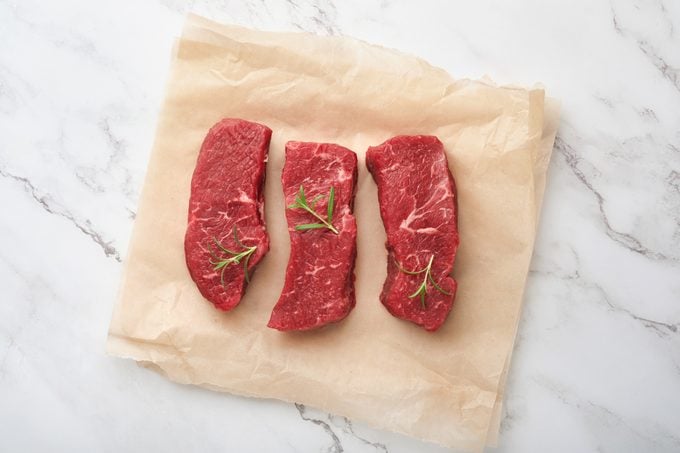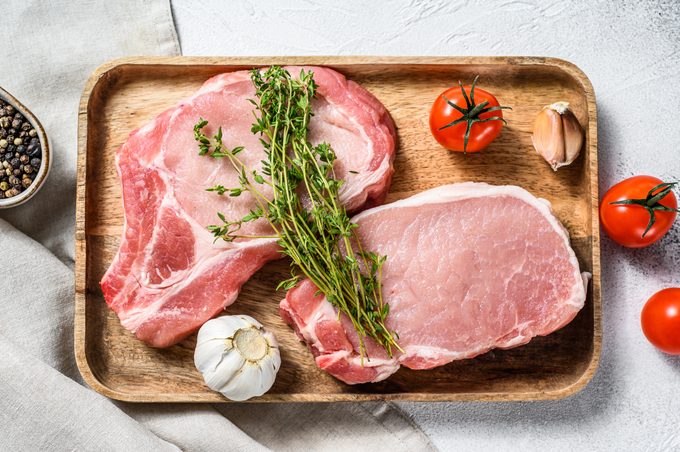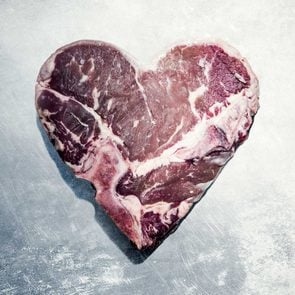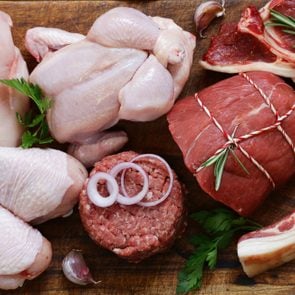Sustainable Meat: The Best and Worst Kinds, Ranked by Sustainability Experts
Updated: May 04, 2024

Can you enjoy meat and still practice an eco-friendly diet? From red to white meats, a registered dietitian and expert in sustainable food reveal which is the greenest.
Meat consumption is one of the hottest—and most controversial—topics when people discuss .iving sustainably, according to a 2022 study published in the Annual Review of Resource Economics. Raising, selling, and eating meat has wide-ranging economic, social, environmental, health, and animal welfare issues.
The solution? The study’s authors determined that when we do consume meat, we have to eat less of it and become smarter in choosing meat we do consume.
And, says Thomas McQuillan, with global climate change rapidly increasing the instability of the food supply, this is something people need to be thinking about now. McQuillan is a grocery packaging industry veteran and a food sustainability expert with Do Good Chicken, a company that’s focused on reducing food waste. A 2021 study published in Nature Food suggested it’s a vicious cycle: Today’s food systems contribute to at least one-third of global emissions. The biggest culprit is our appetite for meat.
Research suggests serious benefits would result if we were to all avoided meat just one day each week. But if, and when, you do indulge…how much does your choice of meat matter? Enter: Sustainable meat.
What makes a meat “sustainable”?
“Sustainable” isn’t an FDA-approved term for food. McQuillan says the meaning can vary between products, ranging from meaningless marketing buzzwords to genuine changes in the entire way the meat is produced, sold and consumed.
“These are complex issues, but generally, [an organization producing] ‘sustainable meat’ is going to consider the environmental impact of their products throughout the production process, and actively look to not only limit, but improve, those impacts,” McQuillan explains.
The Healthy asked McQuillan and sustainable nutrition expert Dana Hunnes, PhD, MPH, RD, Senior Dietitian at UCLA Medical Center for advice on and author of Recipe For Survival, how to choose the eco-friendliest meats, along with specific recommendations of what to look for at the store.
The worst offender: Beef

Steak and burger lovers, heads-up: Not only is frequent consumption of beef not great for your health and longevity, the Nature Food research points to beef as the single biggest food-based climate change contributor by a landslide.
Research published in PNAS says beef production is responsible for between four and eight times the emissions of other animal meats. And compared to plant-based protein? One kilogram of beef needs “18 times more land, 10 times more water, nine times more fuel, 12 times more fertilizer, and 10 times more pesticides” than a kilogram of plant protein like beans, according to a report in Food Research International.
Or, look at it this way: It takes about 660 gallons of water just to make one hamburger.
Cows and steers also produce a ton of methane gas—a potent greenhouse gas that’s worse for the environment than emissions from vehicles like cars and planes, Hunnes says. The Food and Agriculture Organization (FAO) says the methane from cows alone accounts for 10% of greenhouse emissions.
The type of beef you buy matters, too. Ground beef is mainly leftover trimmings from more expensive cuts—so, it’s the demand for steak that drives current cattle-rearing needs. But if you simply must give in to that craving, Hunnes suggests looking for regeneratively farmed beef is better for the earth: “Those cows graze the land and eat the top of grass, leaving the roots in place to absorb carbon into the soil,” she explains.
How to know what you’re getting? Buy local, preferably where you can visit the cattle ranch. Not only will you be able to get a better eye on whether the cows are treated humanely, but you’ll be reassured that your meat isn’t being overly processed or imported from another country.
McQuillan also recommends paying attention to packaging and understanding the labels. “The best verification that a company is doing the things they say they are is a third-party certification, which typically means that an outside entity—and not the company itself—has audited participating brands to ensure they’re meeting elevated production, carbon or animal-welfare standards,” he says.
Also not great: Lamb

Studies show that, in general, sheep and goats are less resource-intensive than cattle. Research published in Ecological Indicators says that producing lamb meat comes with a smaller land and water footprint than cattle require.
However, like cows, sheep are “ruminant” animals that are constantly producing methane through digestion—a process called enteric fermentation, Hunnes explains. Part of what makes this so problematic is that lamb produces about 50% more methane gas than beef, as a lifestyle assessment by the Environmental Working Group (EWG) consumer advocacy group.
So, if you’re trying to reduce your diet’s environmental impact, Hunnes says to eliminate beef and lamb first. Red meat’s no picnic for your health, anyway—here are 10 things that happen to your body when you ditch it for good.
Not quite as bad: Pork

Again, look for locally pasture-raised or ranched pork, McQuillan says. Hunnes adds: “Those pigs will be much more humanely raised and much more likely to be eating a natural diet like they evolved to do.”
The worst pork products? Those from pigs that were raised inside warehouses—where their waste ends up in large cesspools that pollute surrounding waterways and air.
Two advantages to choosing “the other white meat”: Pork produces half the emissions of beef (and way less than lamb), according to the EWG; and their diets could actually help solve another problem: Food waste. While laws and regulations vary, farms in places like Maine turn waste from restaurant buffets and school cafeterias into dinner for their pigs. This practice prevents food waste from winding up in landfills—where it contributes to greenhouse gasses—and reduces the amount of land needed to grow food for our food.
Your best bet: Chicken

Both of our experts chose chicken as the most environmentally-friendly meat.
Specifically, “pasture-raised chickens that have room to roam naturally and peck at the ground for their food, eating whatever they want.” Chickens don’t digest through enteric fermentation, as cows and lambs do, and they require much less feed and water when they’re free-roaming.
There are some companies doing even more to increase the sustainability of poultry. “Do Good Chicken, for example,” says McQuillan, “is the first ever verified carbon-reduced chicken, with each Do Good Chicken preventing the release of approximately three pounds of greenhouse gasses thanks to its use of feed made from upcycled surplus food from grocery stores.”
If you can’t find pasture-raised chicken, Hunnes advises that the next best options are to look for products that are free-range, organic, or certified humanely-raised, she says.
Hunnes also gives turkey a nod, as they’re raised pretty similarly to chickens. And don’t worry, turkey won’t really make you sleepy.
Or, give game meats a try
While less conventionally popular, Hunnes says that game meats (think rabbit, duck, goose, elk, bison, venison, or goat) are often environmentally friendlier than many alternatives. That’s because they’re often naturally raised, and in some regions—as is the case with deer in parts of the Northeast, for example—the hunting practice that yields the meat is part of a larger humane strategy to manage the population of their species.
Although, if you’re trying to cut meat altogether, check out these 15 best plant-based proteins that nutritionists recommend.
Get The Healthy @Reader’s Digest newsletter and follow The Healthy on Facebook, Instagram, and Twitter. Keep reading:
- This Natural Sweetener May Lower Cholesterol and Blood Sugar, New Study Says
- Are You an Aspiring “Reducetarian”? These Are the 5 Smart Grocery Swaps You’ve Got to Try
- 7 Gentle Exercises to Tone Your Lower Body
- This Is the Best Diet for Your Heart, Says New Report
Additional writing and reporting by Charlotte Hilton Andersen.


















